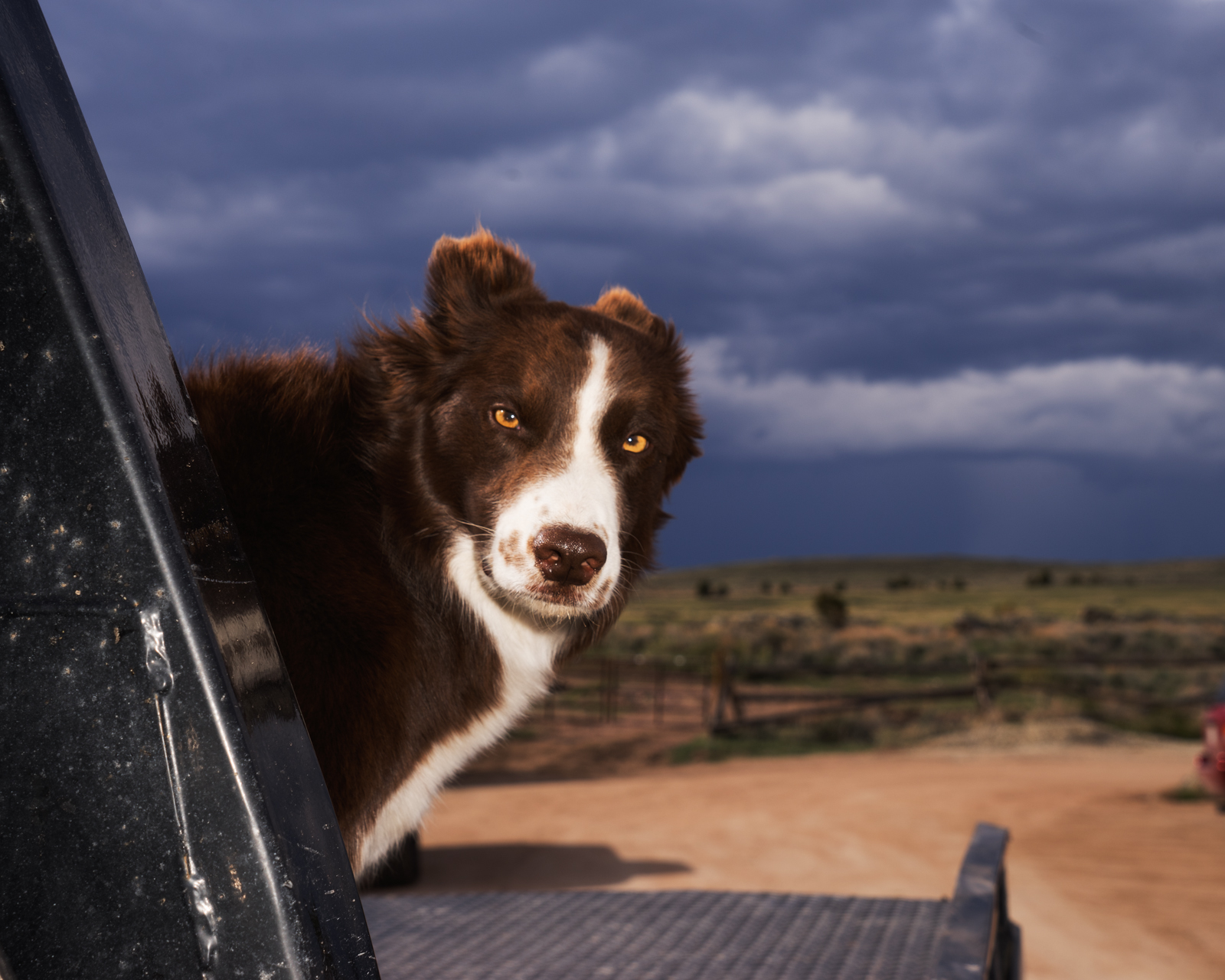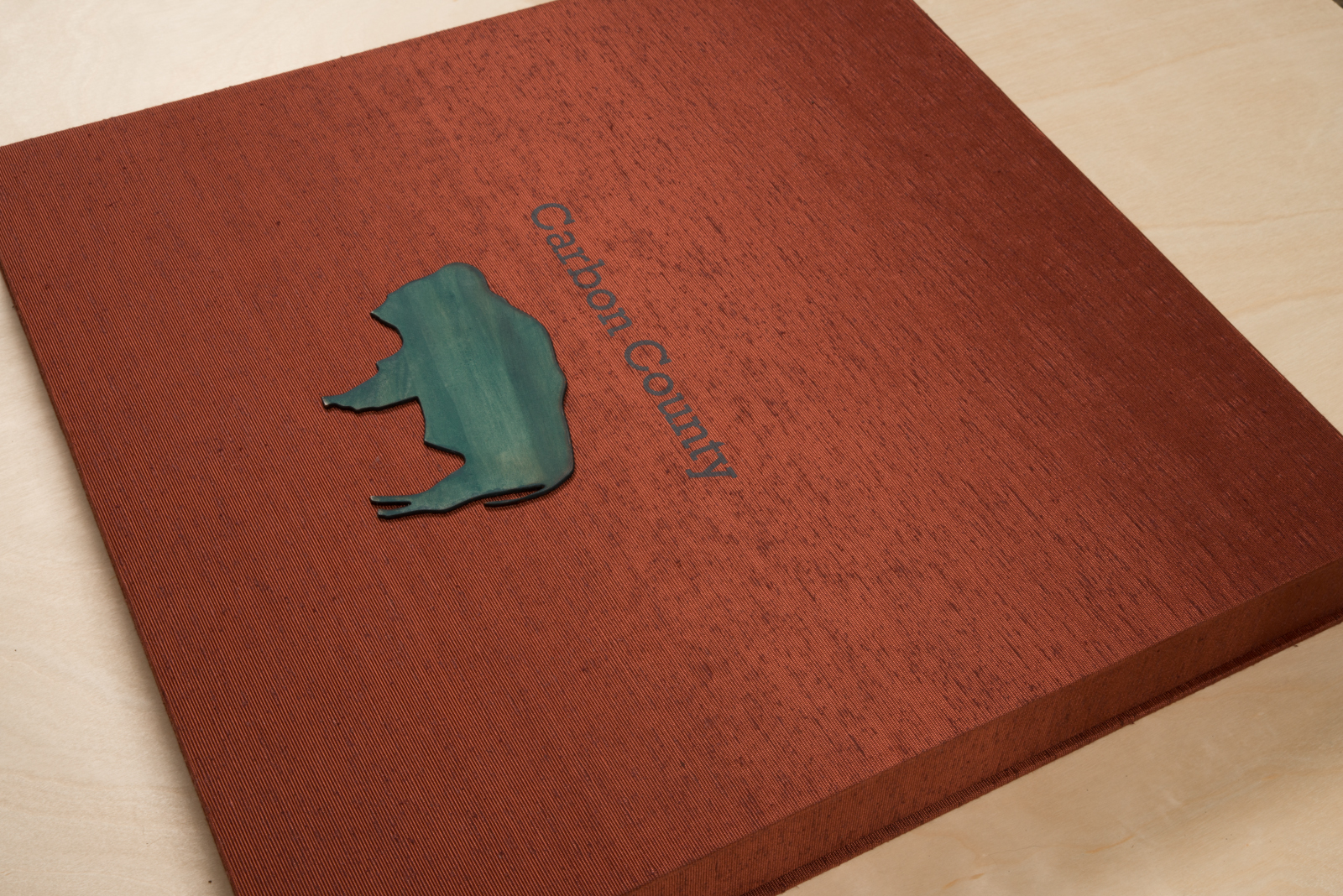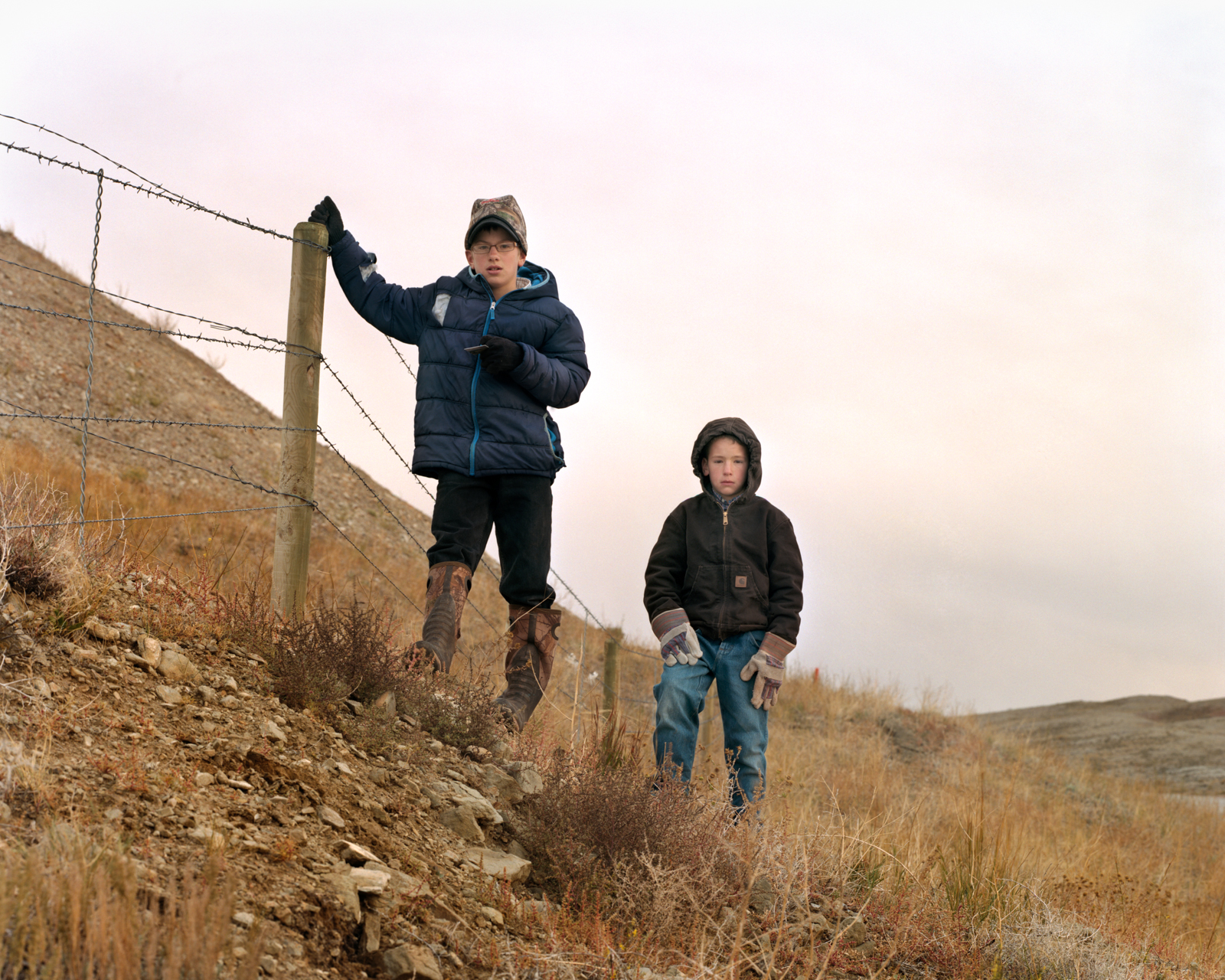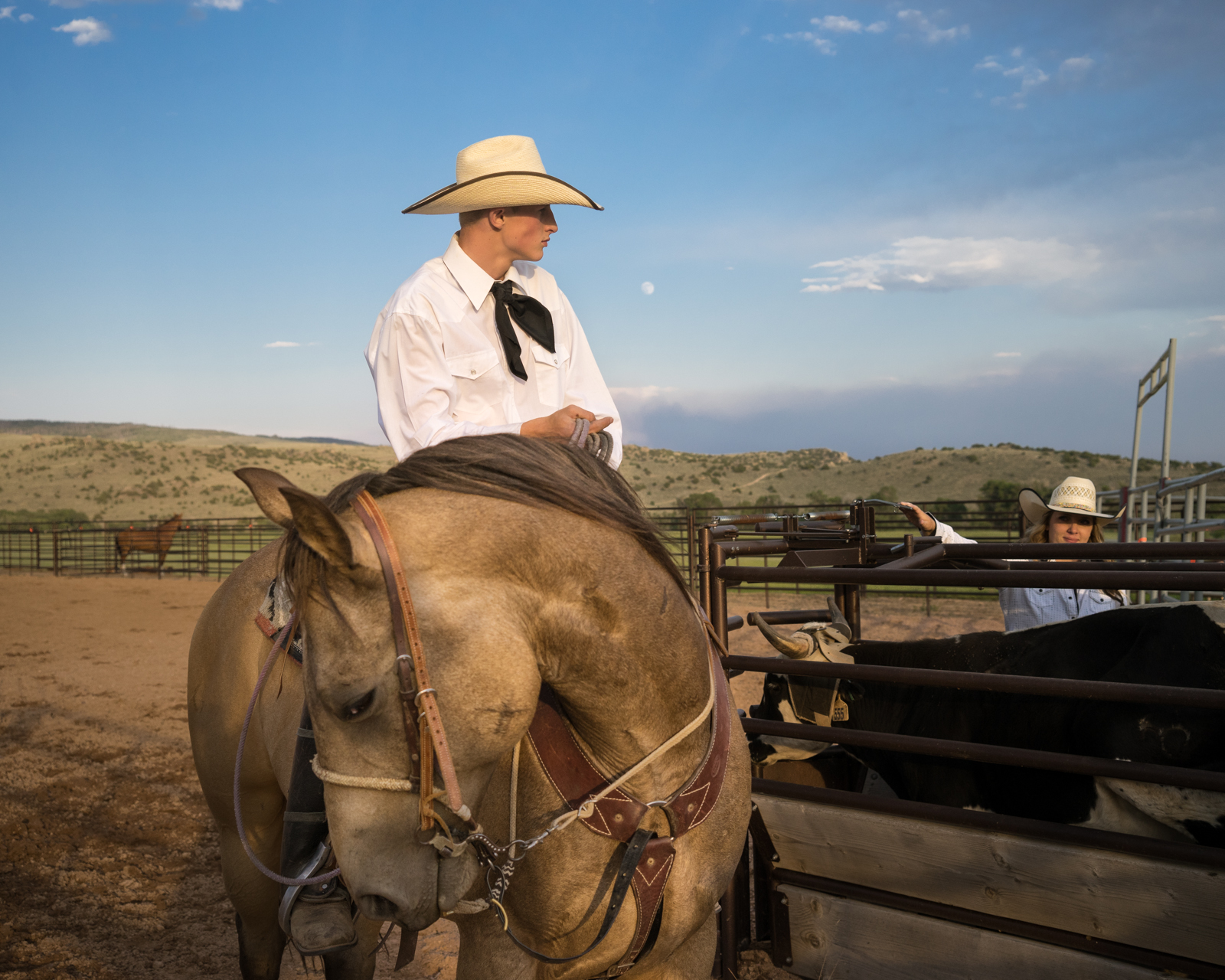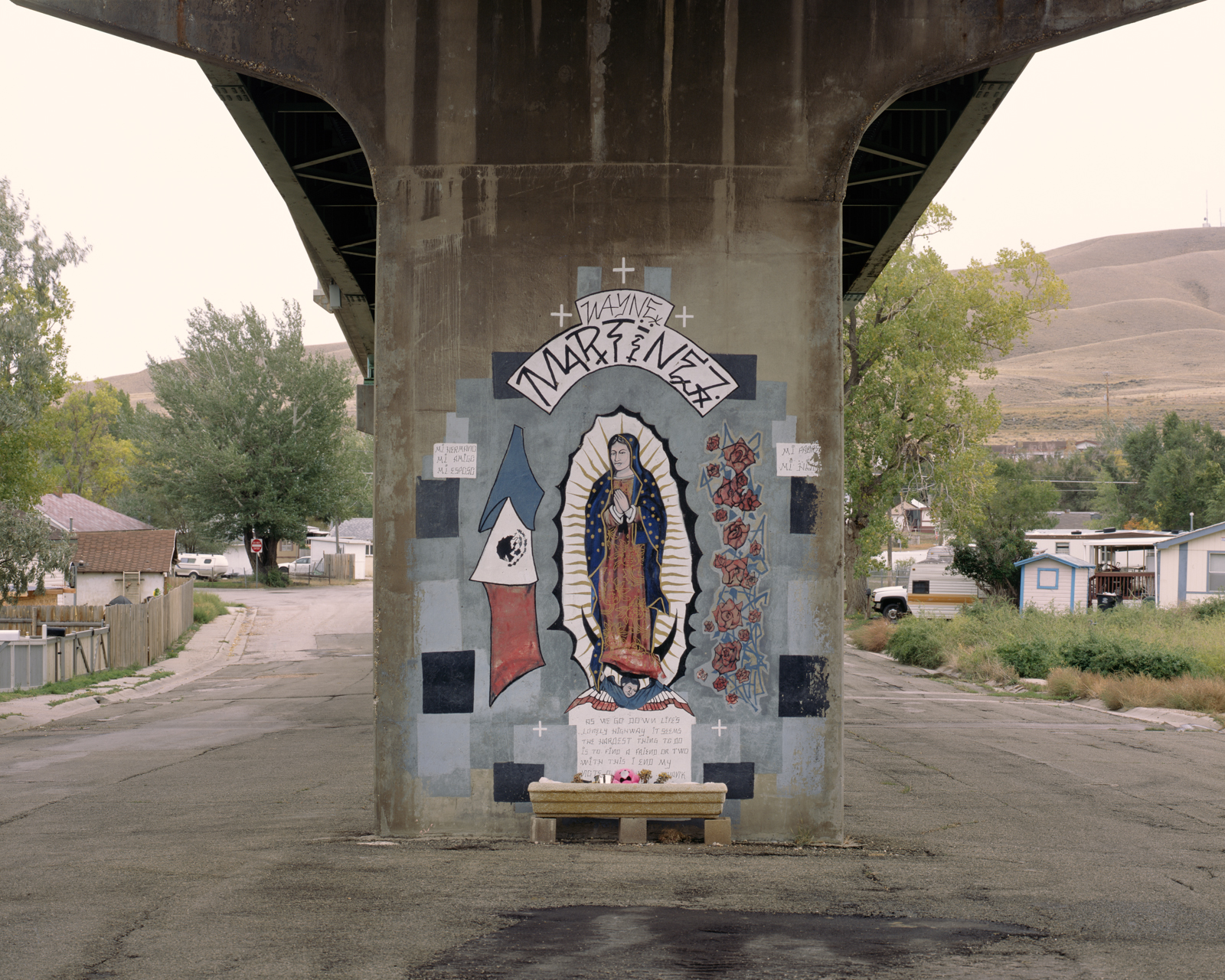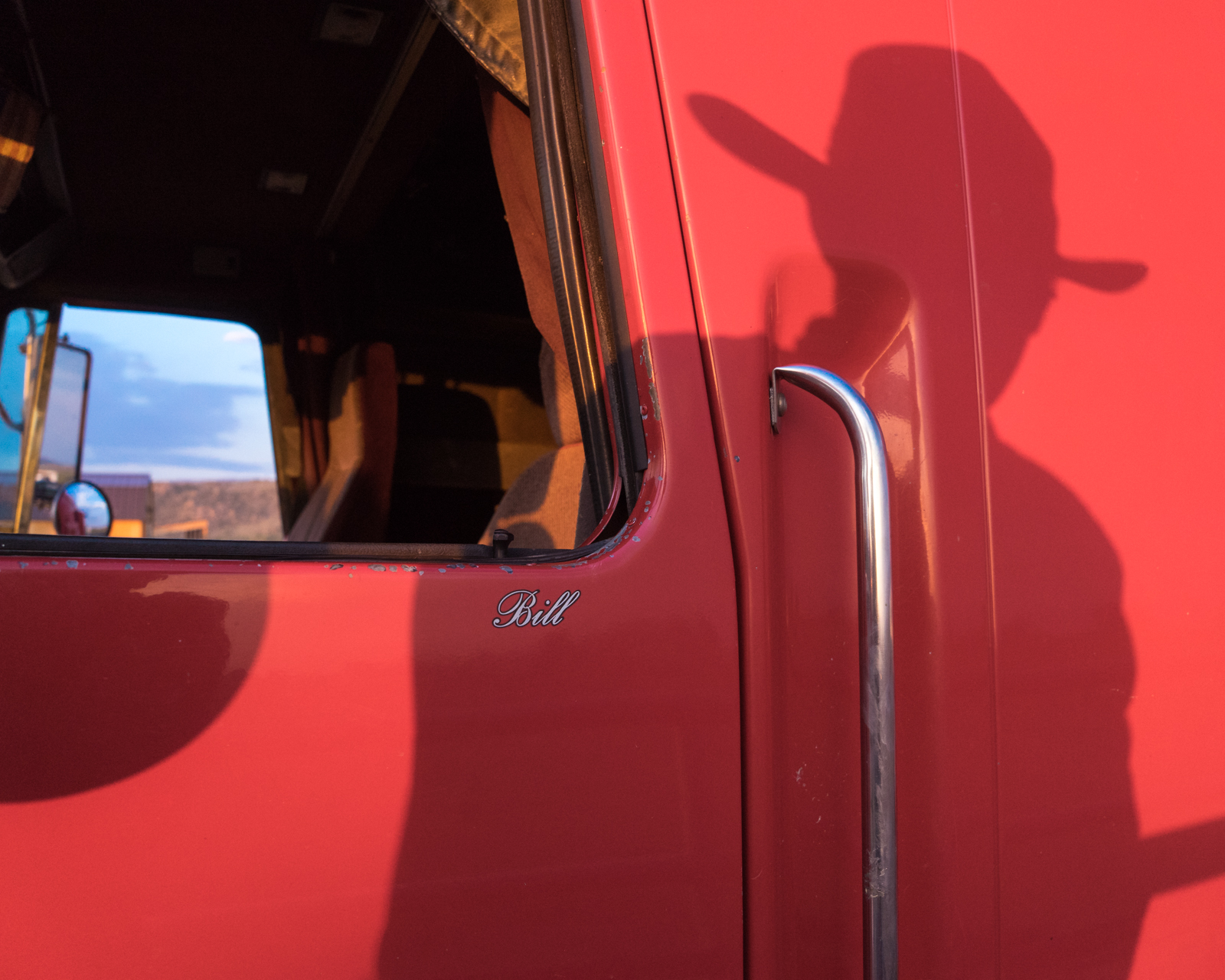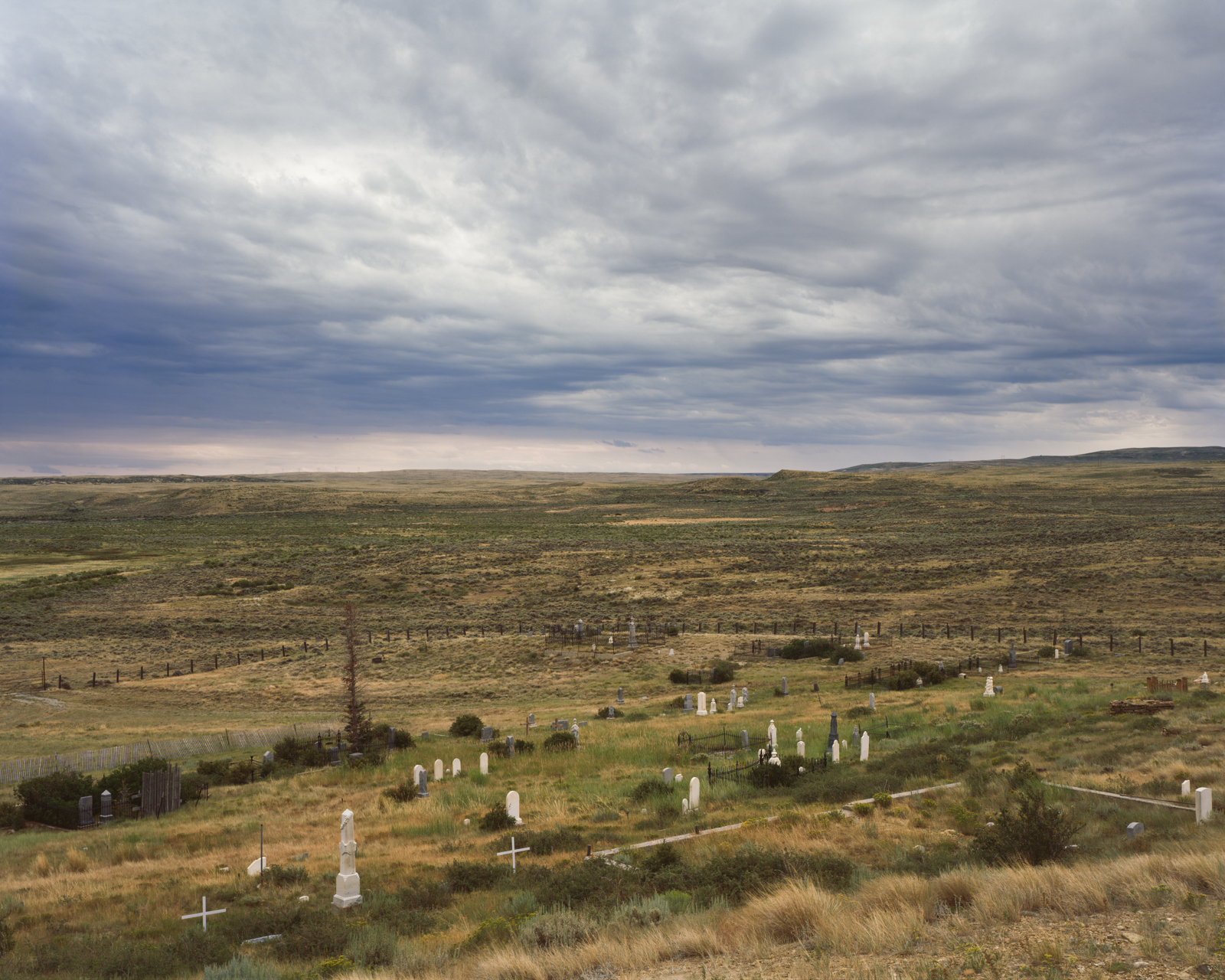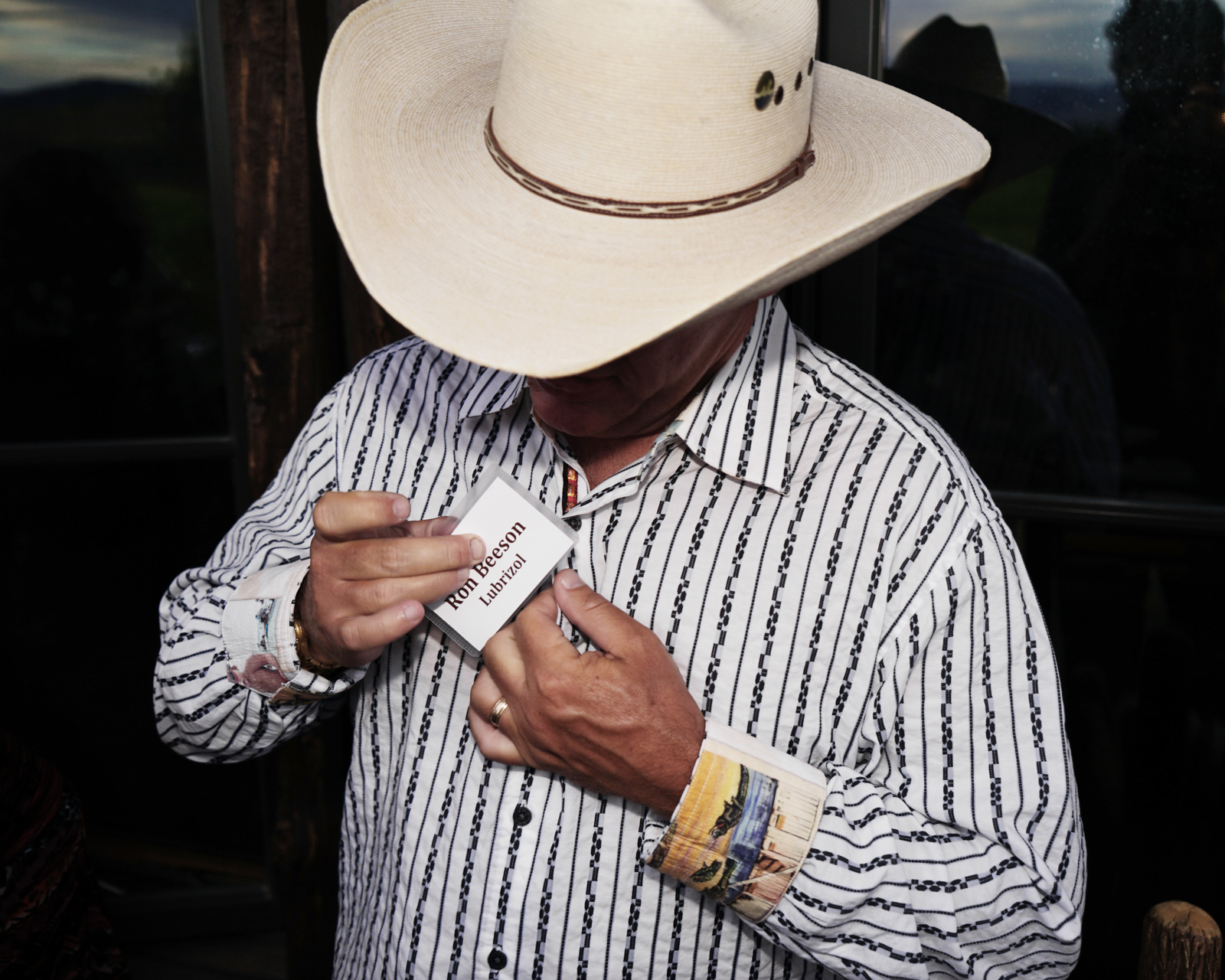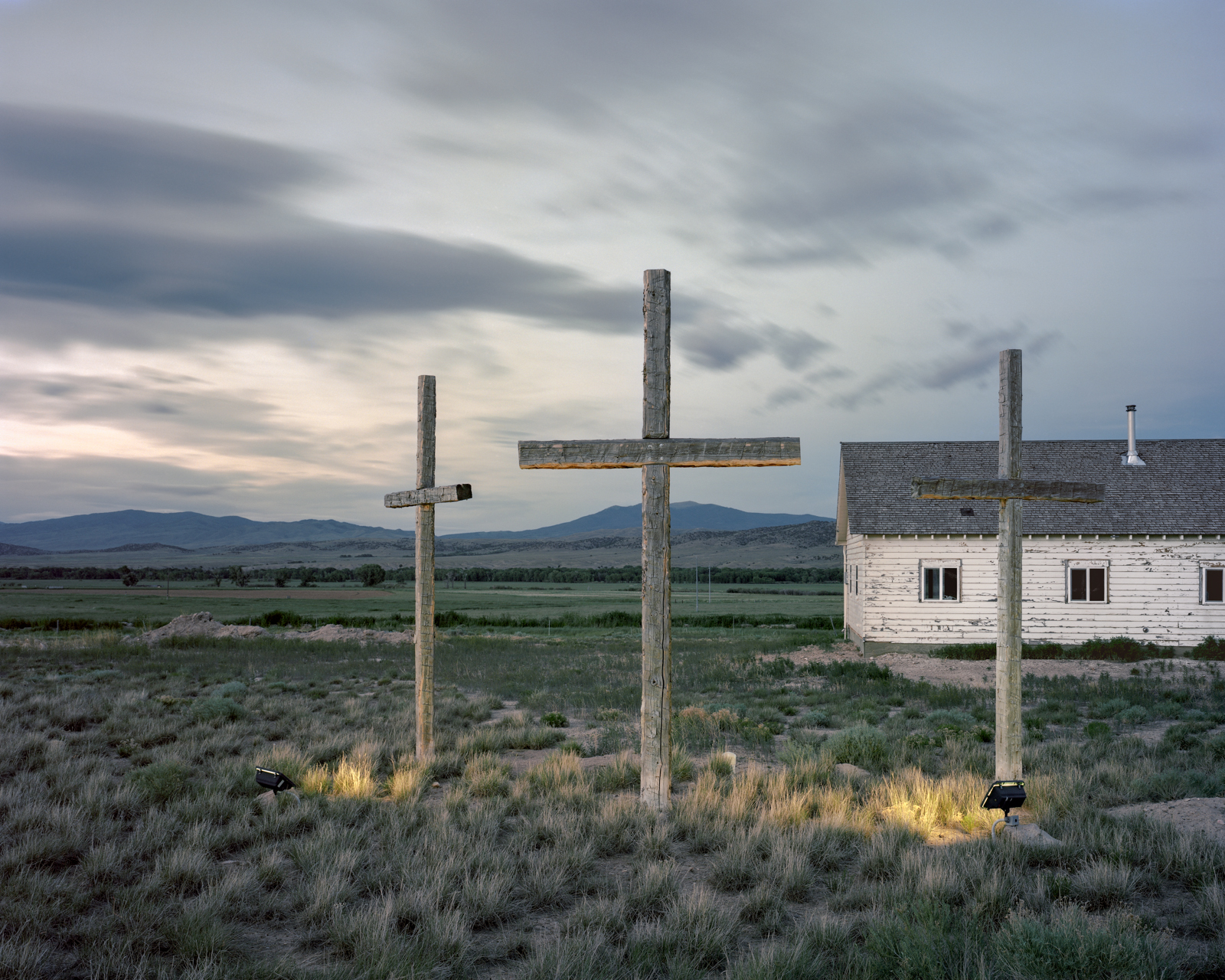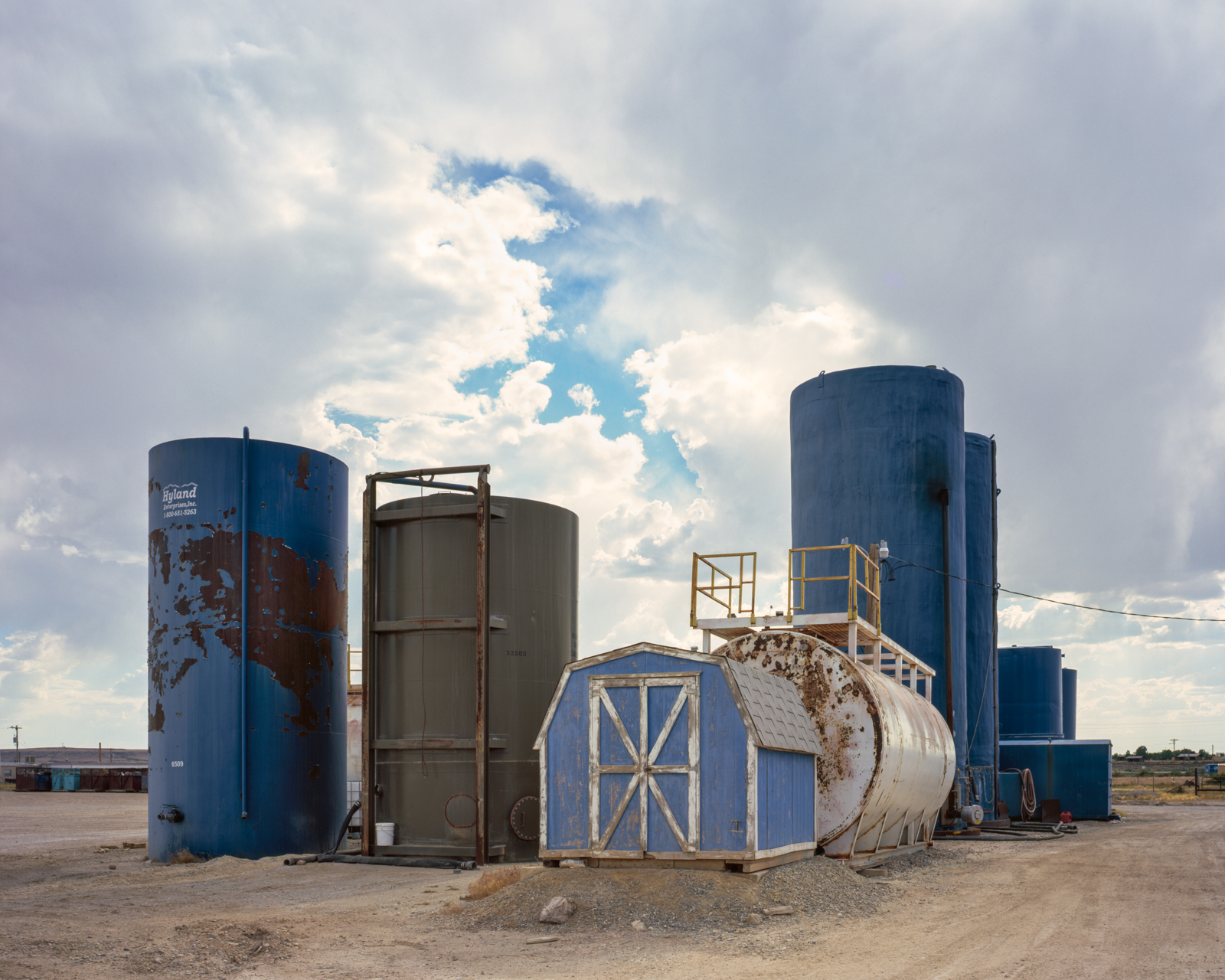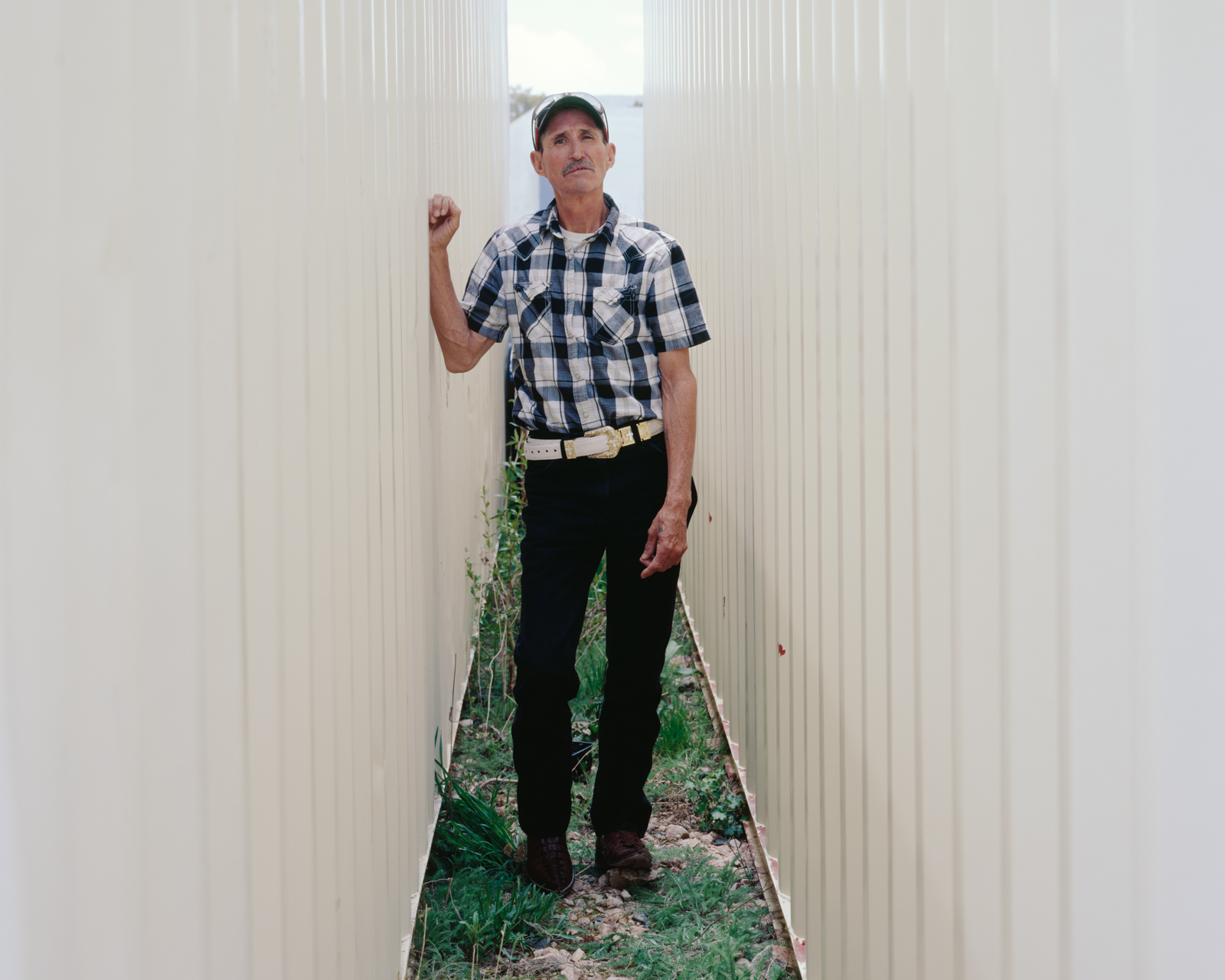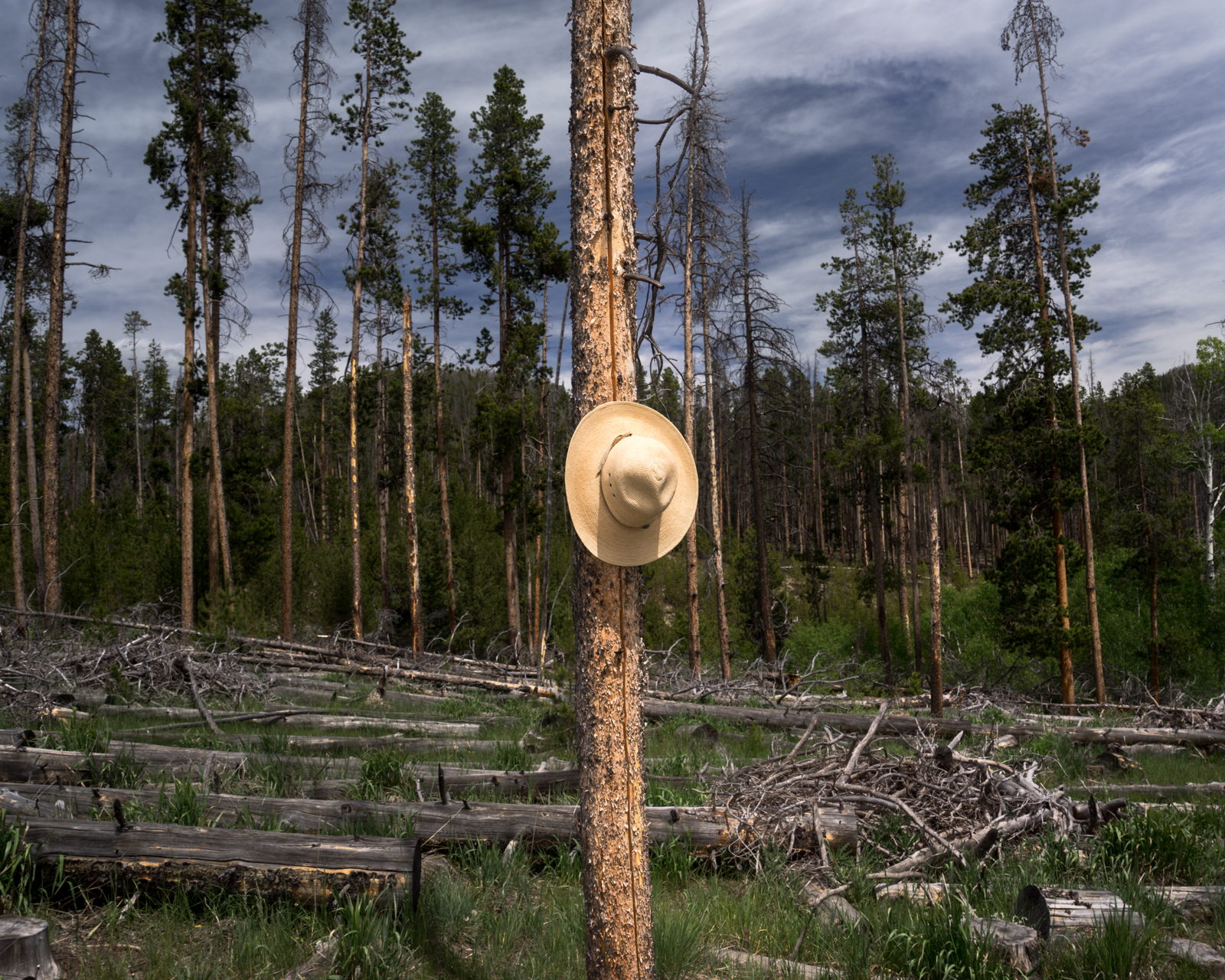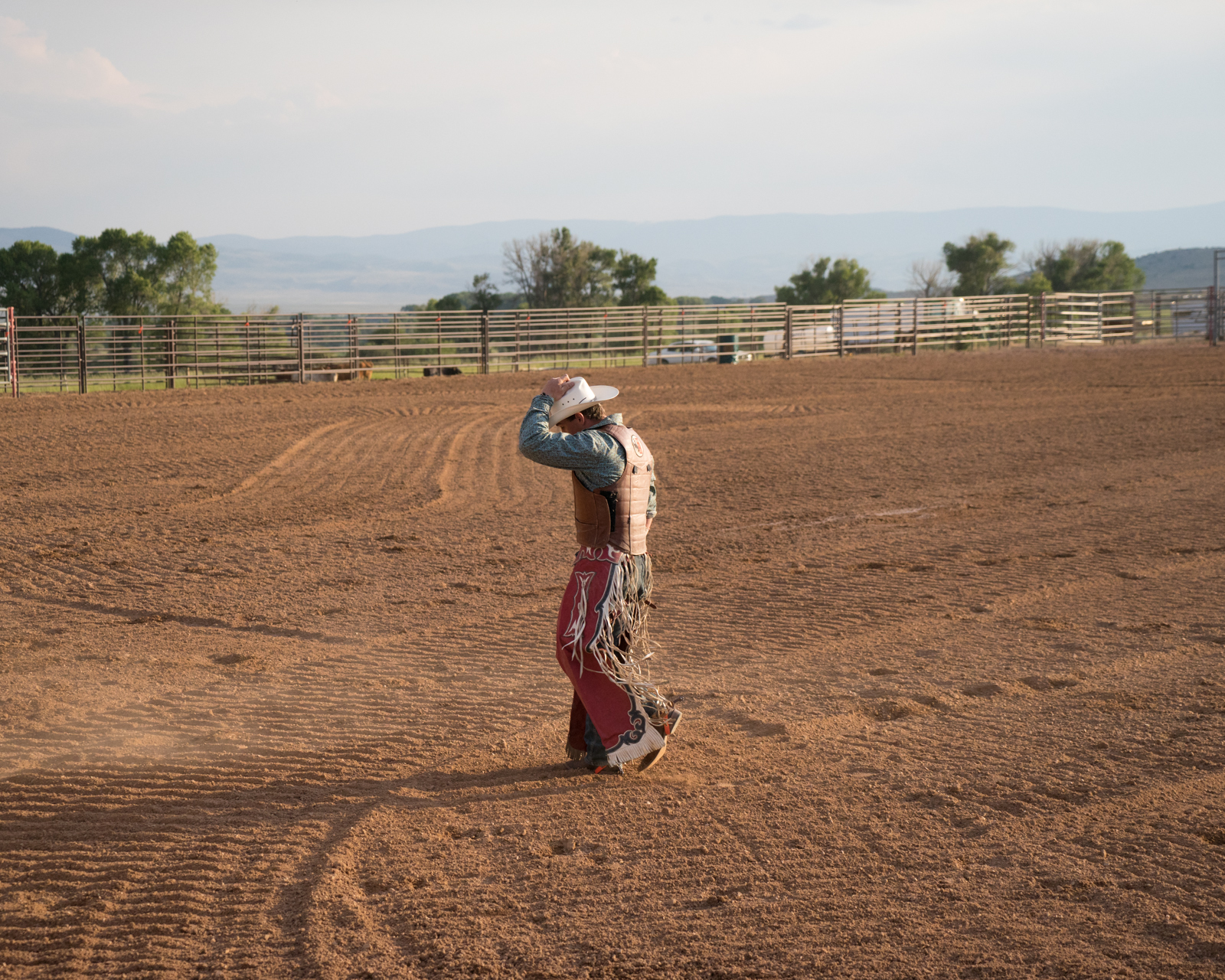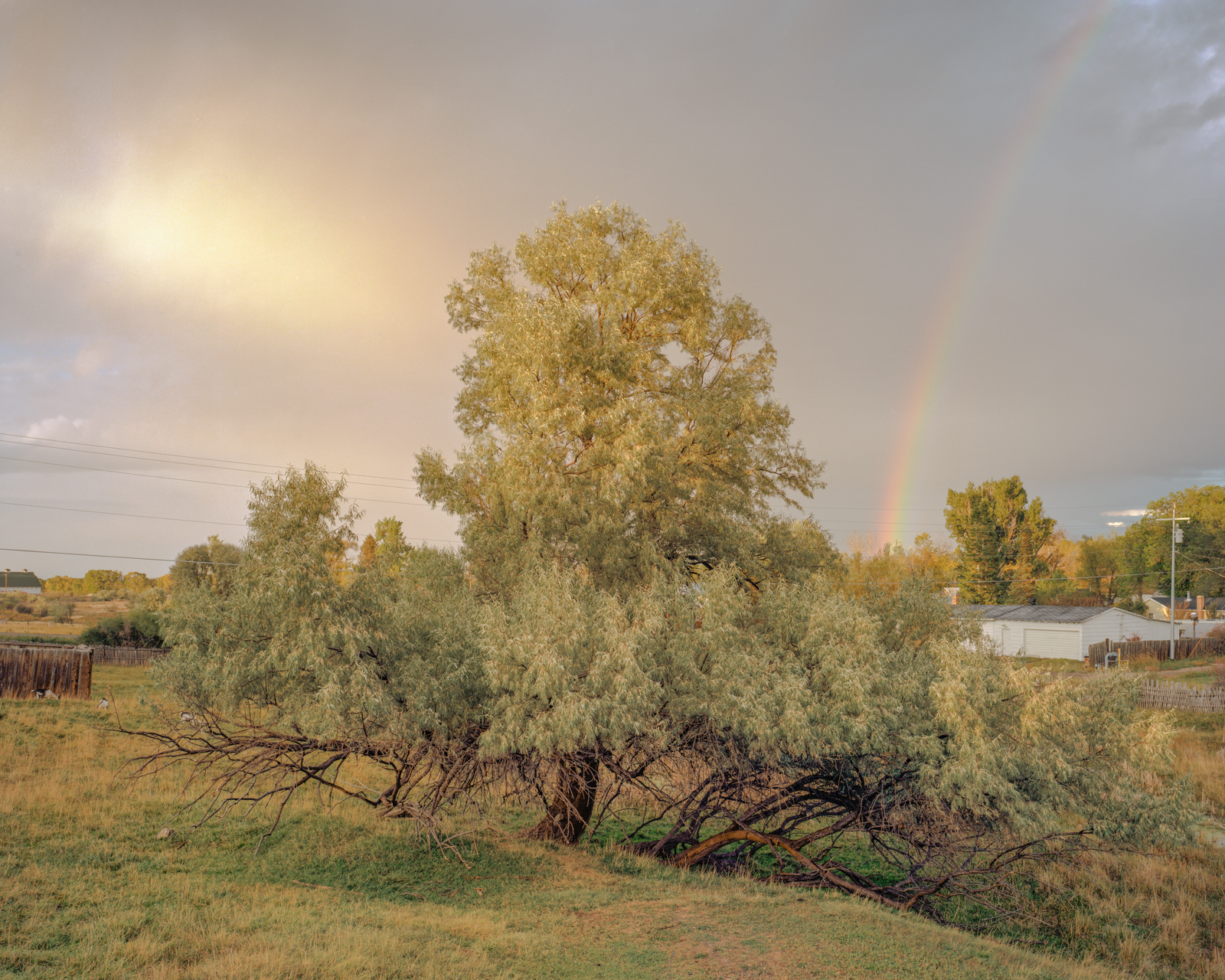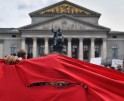John Sanderson: Carbon County
At first glance John Sanderson’s series of images, entitled Carbon County, has the familiar cadence of American Western documentary photography. Broad sweeping landscapes with horizons that seem worlds away, lonely snaking roads and rugged men on horseback. But very quickly these perceived pillars of American Western identity, the keystones in the story we tell ourselves about Western life, take a different shape. There is a tone of mythology in the gaze Sanderson casts upon his subjects as he explores Carbon County through the lens of American Western lore.
This becomes most clear in the photos made through the dashboards or windows of cars, a framing which begins to feel as though it contains a still from an old Western movie. And isn’t that how we most often experience this landscape? Either in film or traversing the country on highways, snapping pictures of some road signs or an old windmill through the window and then carrying on our way? I ask myself these questions and then begin to wonder whether I’m allowing the version of the West that exists in my own mind to be projected onto the imagery. Perhaps this is the point. Sanderson presents us with the truth and the fantasy all at once as he explores the narratives ingrained in us – Frontierism, Cowboys and Indians, the promise that as you move West surely wealth and personal discovery would be bestowed.
Carbon County is being published by Zatara Press as both a booklet and a beautifully designed folio box with 24 signed and numbered color photographs tipped into letterpress boards. The folio boxes are available for pre-order here.
John Sanderson is drawn to broad topographical subjects within the United States of America. It is there in the outdoors he feels most creative. His photographs reconcile American motives of impermanence, and expansion within the contemporary landscape. His projects include themes such as transportation, leisure, residence, industry, and decay. The influence of growing up in New York City’s Midtown Manhattan underpins much of Sanderson’s work which is rooted in a passion for architectural design. He captures photographs for each project with multiple large format film cameras as well as smaller digital cameras as needed for commercial clients. Sanderson’s photographs have been featured in a variety of publications such as: Slate Magazine, BBC News, The Wall Street Journal, and NBC News. Fallen Flags, and Railroad Landscapes have both been the subject of several solo and group exhibitions. In 2017, he published National Character, a Monthly Monograph Magazine, by Subjectively, Objective. His work resides in a number of private and public collections including the Metropolitan Transportation Authority, New York Transit Museum, NTR Partners, and the Center for Railroad Photography & Art.
Carbon County
The wagon ruts were quieted when the Transcontinental Railroad was built in 1869. Now, people fly, or drive across Interstate Highways, missing all the little whistle stops that are quiet along the nearby two-lane roads. Since America’s destiny was deemed manifest (for better or worse), the landscape here has often been crossed in search of something more, such as: California Gold, Utah Salt, or Oregon Timber. That residue of human migration remains in the form of towns like Medicine Bow and Old Carbon, now bypassed by both the rail and road. Carbon County, Wyoming, was named after extensive coal deposits, when the Union Pacific Railroad began mining the area to fuel its steam locomotives. This is a region where American women first received the right to vote, and bandits such as Butch Cassidy and the Sundance Kid roamed, and robbed. Trumpeting humanity are the barren, windswept high plains crowned with the mountains of the Snowy Range.
After an artist residency in 2015 at Brush Creek Ranch, I quickly became enamored with this land. As a native-born New Yorker, it beckoned me to return, and in 2017 as a result I sought employment at a private dude ranch. Wyoming and Carbon County grew ever larger in my imagination after we settled in as a family. The landscape and towns unfolded before my camera, and the photographs became imbued with a sense of raw expression as we journeyed from place to place. I began to see meaning in the ostensibly empty state. The barren, windswept plateau and snowy peaks awakened a primordial desire to daily capture my vision of the surrounding horizons. Through popular culture I inherited a false mythos of the American West as a place of abundance and adventure. I strove to unburden myself from this flawed perception as I began searching for a notion of a True West shaped through a better understanding of its history.
During this journey I found something different, and startlingly current. In contrast to my false assumptions, a counterpoint between visions of the land and human ambition began to grow. The Prison in Rawlins, the Fearless Bull Rider, Hydrofracturing Water Tanks, and the Cowboy Myth all harkened back to what I discovered to be a new contemporary reality of the Frontier ideal. I no longer saw Carbon County merely as a place to pass through to get somewhere else, but rather as a fictitious example of our national ambition. Thus a hidden metaphor within the title revealed itself. Carbon is to unquenchable desire for experience and resource, as County is to its untenable, bordered end.
I experienced a version of the American West in my mind before ever going there. The William Tell Overture, the Westerns my Father watched, playing Cowboys and Indians; all of these added to this false inheritance from the American media that showed the West as a place of endless opportunity. Yet to myself it always seemed that California was the goal. Wyoming as an identity stood out of place in my mind, as if it was just there to be trodden on, forever marked with wagon ruts. It still feels hidden and unknown to me. What I discovered during my journey is the true foundation of all the West; the cultural generosity of its land and people to provide material and experience. As a boy I enjoyed wearing a cowboy hat. There’s a picture of me at six years old as a cowboy. These project’s pictures are in some way another reflection of myself. The desire to become what I saw, to take a little piece of the majesty, and adventure which continues with me to this day.
Posts on Lenscratch may not be reproduced without the permission of the Lenscratch staff and the photographer.
Recommended
-
Lauri Gaffin: Moving Still: A Cinematic Life Frame-by-FrameDecember 4th, 2025
-
Dani Tranchesi: Ordinary MiraclesNovember 30th, 2025
-
Art of Documentary Photography: Elliot RossOctober 30th, 2025
-
The Art of Documentary Photography: Carol GuzyOctober 29th, 2025
-
The Art of Documentary Photography: Matt McClainOctober 28th, 2025



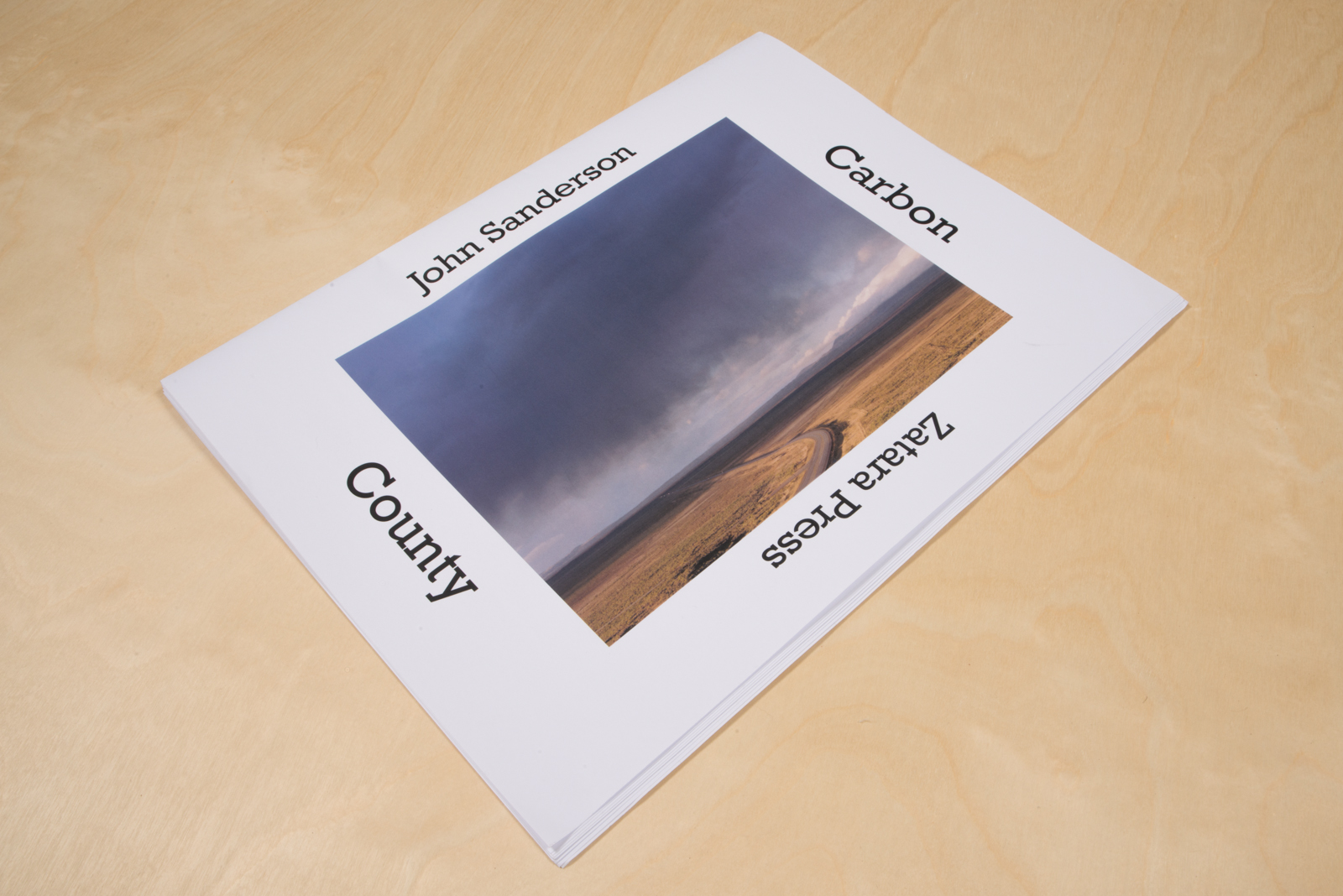
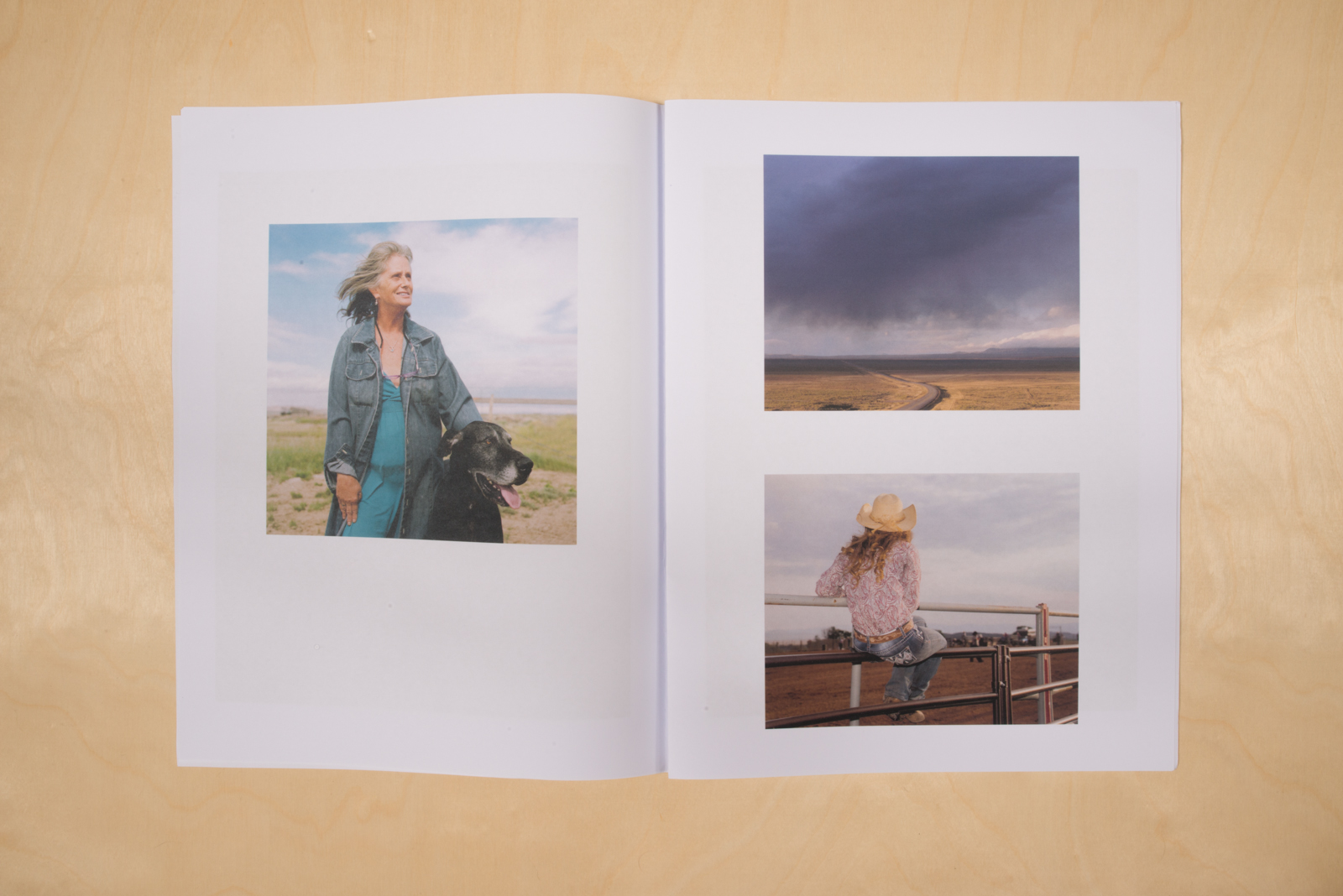 ©John Sanderson, from Carbon County published by Zatara Press
©John Sanderson, from Carbon County published by Zatara Press